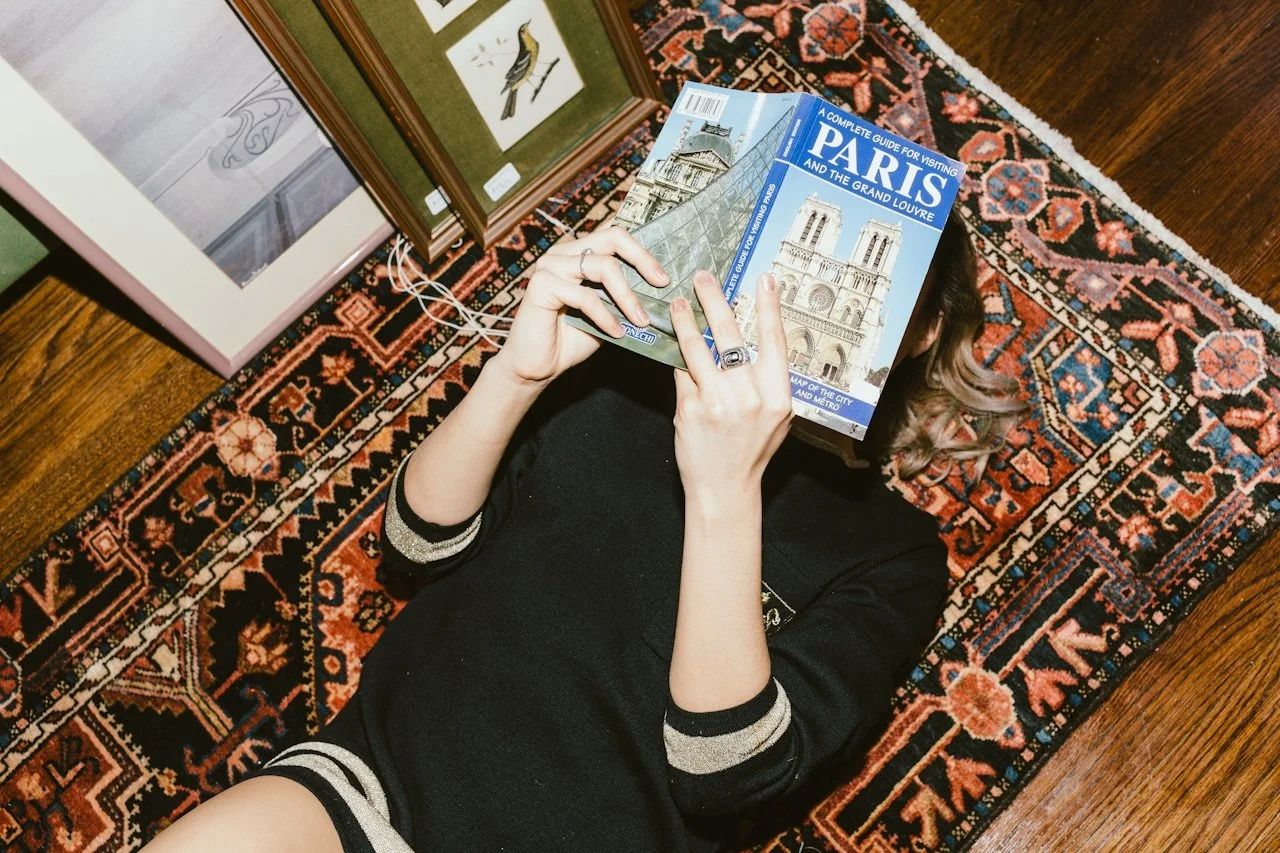How Dopamine Walls Became My Ultimate Visual Stim
How Dopamine Walls Became My Ultimate Visual Stim
BY ELIZABETH YUKO
It started with a reproduction of a 1913 Women’s Suffrage poster and two black and white framed photos of my grandparents.
These were the first pieces I hung on my mossy green walls when I moved into my studio apartment in Queens, New York 11 years ago — but they were far from the last.
Despite being on a tight budget, I always managed to unearth ultra-affordable art, ephemera, and images at flea markets and estate sales, along with plenty of secondhand frames. Piece by piece, I strategically hung my latest finds until eventually, all 400 square feet of wall space was completely covered in art, photographs, and memorabilia.
“This must be what it looks like inside your brain,” a friend said after walking into my apartment for the first time. She’s not wrong.
As someone who is neurodiverse and relies on visual stimming for comfort and improved focus, being surrounded by colorful, textured walls helps scratch that mental itch and keep my mind engaged.
Here’s how to create a Dopamine Wall in your own home.
Why Dopamine Walls Are Ideal For Visual Stimming
On the surface, my tendency to gravitate towards maximalist wall decor may seem counterintuitive for someone who can have difficulty concentrating.
But according to Maria Xirou, MD — a medical doctor, expert in interior design tailored for the neurodiverse community, and author of Interior Designing for the Neurodiverse: A Transformational Guide — a dopamine wall can be a powerful tool to support neurodivergent individuals, providing visual stim and “offering a calming influence while also aiding focus, energizing them, or stimulating creativity.”
Although some people might find a colorful, captivating wall overstimulating and distracting, Xirou says that it’s important to acknowledge that people experience them in different ways. “Recognizing the positive and adaptive aspects of stimming is essential in creating supportive environments for neurodivergent individuals,” she explains.
This is something that Pippa Jameson — interior stylist, founder of The Sensory Home®, and author of The Sensory Home: An Inspiring Guide to Mindful Decorating — understands firsthand, as someone living with autism. And when it comes to dopamine walls, what works well for one person might not work for another. That’s why she suggests opting for personal elements that you find comforting.
“By using individual pieces that can act as soothing anchors during moments of overwhelm, we can create a sensory-rich experience that is stimulating but controllable,” Jameson explains. “The look and feel of a [dopamine] wall would naturally vary between individuals as everyone’s sensory preferences are different.”
Along the same lines, coming up with a curated arrangement of images, colors, and textures can serve as a source of inspiration, Xirou says. “By thoughtfully designing the [dopamine] wall to reflect your interests and sensory preferences, it can enhance your strengths and support your unique needs in a personalized and meaningful way,” she notes.
How To Get The Most Visual Stim Out Of Your Dopamine Wall
Creating a dopamine wall isn’t difficult, but it does take some planning and attention to detail. Here’s what to consider in order to get the maximum visual stim out of your dopamine wall, according to experts.
Make It Personal
Include décor pieces, photographs, artwork, or ephemera that have personal significance, Xirou advises. Whether they spark a memory — reminding you of an achievement, a loved one, or a happy time in your life — or simply bring you joy, these items should evoke positive feelings.
“Use personal style to align the [items] with the desired mood: calmness, happiness, energy, or creativity,” she says.
Contemplate Color
Use red, yellow, bright green, and any other bright color to energize a space, Xirou says, and opt for light blue, dusky pink, light green, white, gray, or beige to create a feeling of calmness. Dark blue could help increase your concentration, she notes, so consider painting the wall where the items are located a deep blue to enhance focus.
Add Texture
For some, selecting textured pieces of artwork can offer a subtle amount of visual stim, says Amber Dunford, a design psychologist. For example, you can add depth with tactile elements like fabric art, framed textiles, or decorative pieces that can hang on hooks.
Dunford suggests finding art with texture that draws from a simple color palette so it doesn’t feel overwhelming. “You may want to avoid texture that does not remain stationary, however, such as tassels or strings that might move as the air hits them. This could be an unwelcome distraction and prove bothersome,” she explains.
Pick Some Patterns
Don’t be afraid to select pieces for your dopamine wall that incorporate different patterns, Jameson says — just be sure to select ones that feel engaging without being overwhelming. “Geometric designs, repetitive motifs, or organic shapes can be effective,” she explains.
Find Similar Frames
While using frames similar in shape and color might not be on-trend, it minimizes visual clutter — something Xirou says some neurodivergent people could prefer. “Unless the arrangement is done with clever attention to harmony, mismatched designs can feel chaotic rather than calming,” she explains.
For those seeking chill vibes, she suggests selecting frames in shades of white, gray, or satin gold that don’t dominate the composition, allowing the focus to remain on the artwork, photographs, or text. For the same reason, Dunford recommends choosing artwork and frames of similar sizes.
Look At The Lighting
Pay attention to how light interacts with your wall, Jameson says. “Pieces with reflective surfaces or subtle illumination can add movement and intrigue,” she explains. To accomplish this, Xirou recommends using mirrors strategically within the pieces to reflect light and enhance the visual effect.
Showcase Shelving
If you’re not a fan of traditional wall hanging, Xirou suggests considering shelving as an alternative. “Shelves allow for easy swapping and rearranging of frames, eliminating the need for drilling new holes or using adhesive tape,” she says. “This flexible option also makes it simple to refresh the display whenever you like, adding a dynamic and personalized touch to your space.”
Switch It Up































